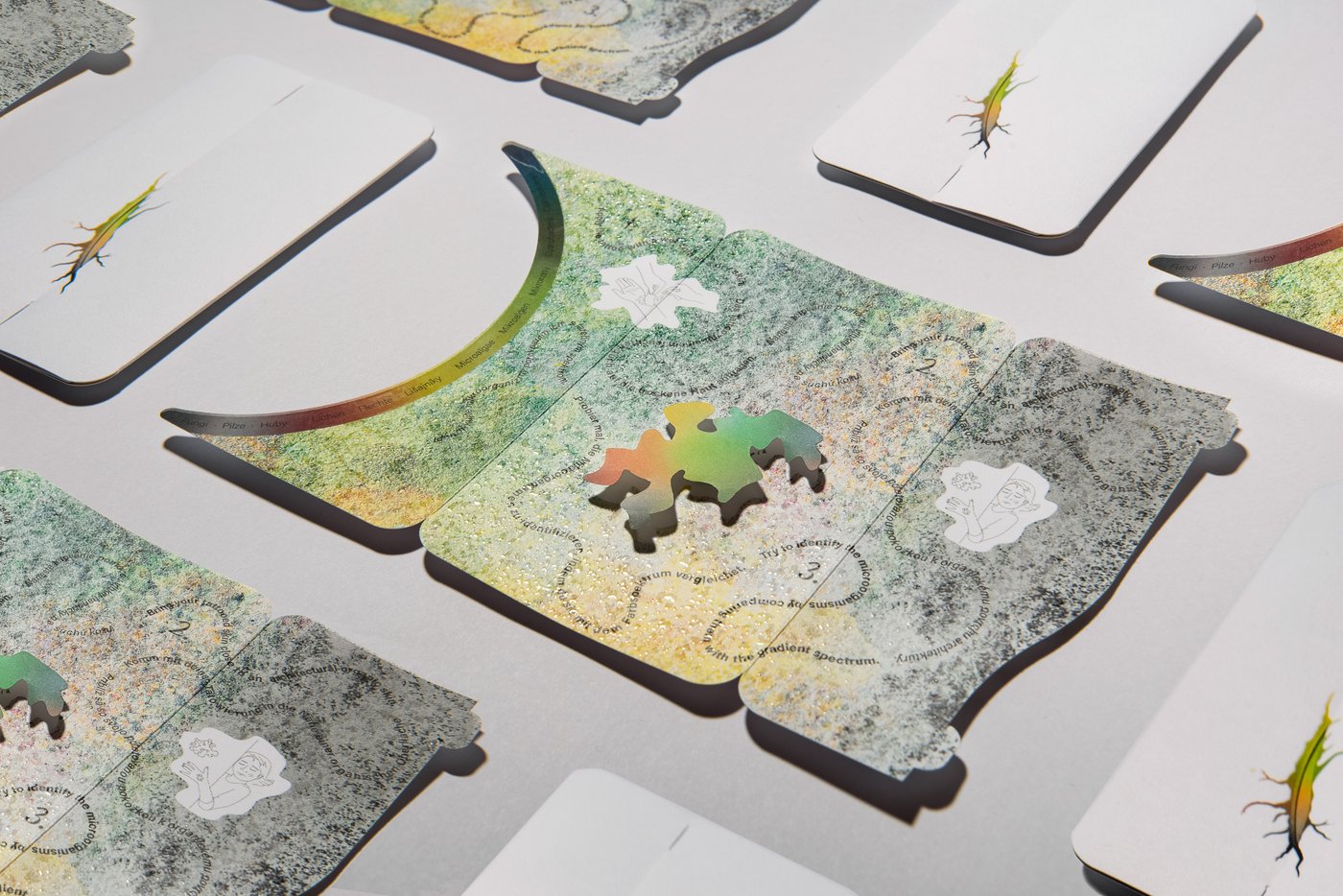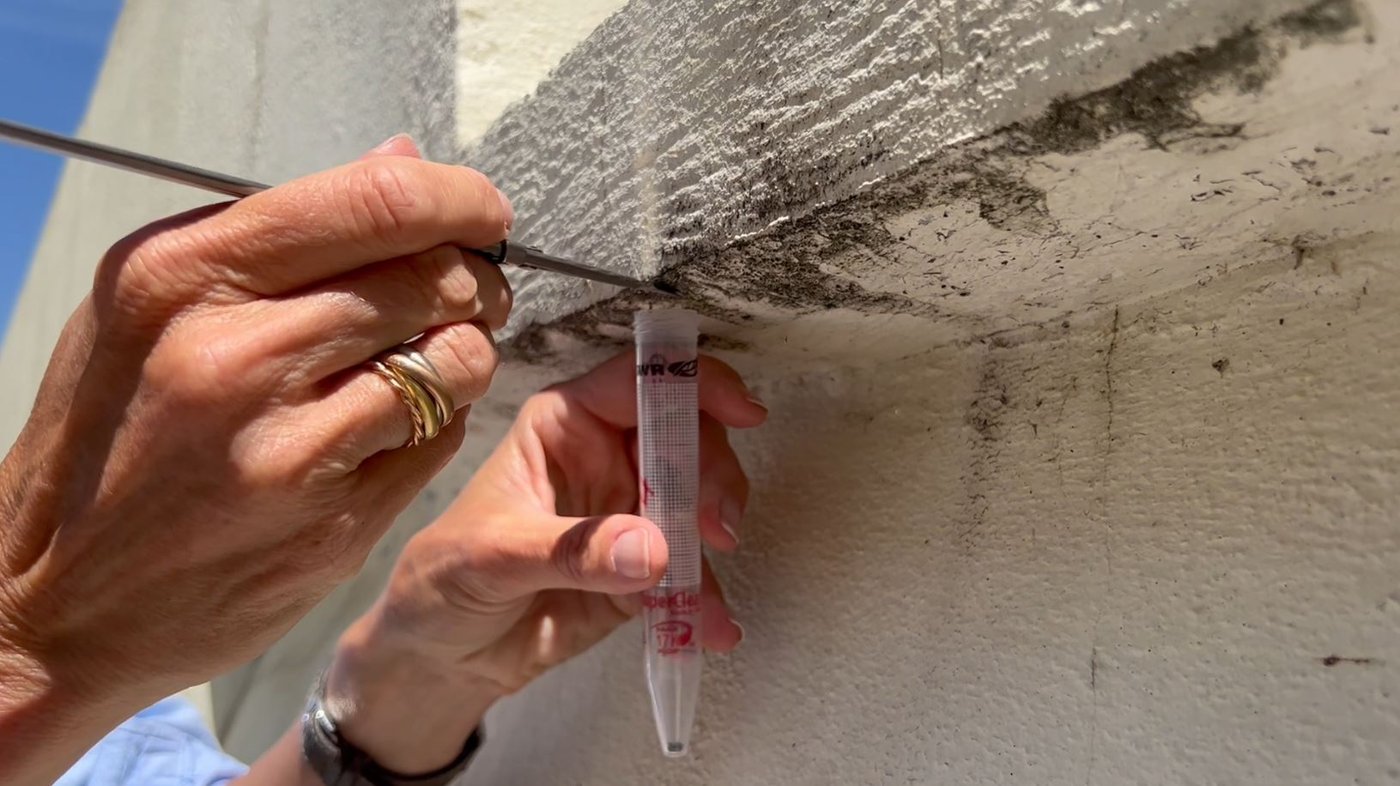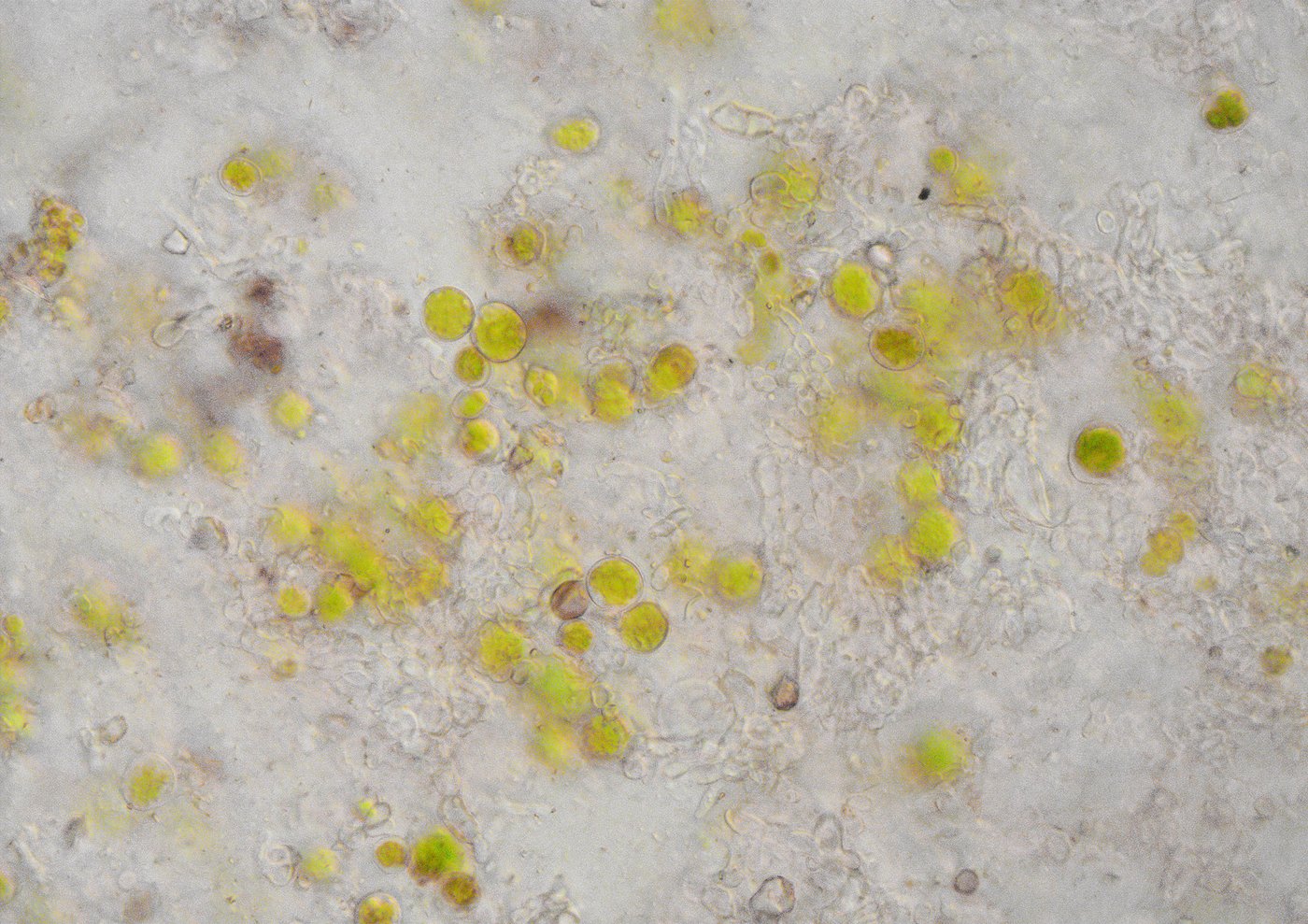Epidermitecture featured at the Venice Architecture Biennale 2025
Outcomes of the research project Epidermitecture are presented within the main curatorial exhibition at the Arsenale as part of the Venice Architecture Biennale 2025. This research is a collaboration of the Institute for Art and Architecture, the Institute of Natural Sciences and Technology in the Arts and the Dust Institute. The project team consists of Michelle Howard, Adam Hudec, Laura Rabbachin, and Katja Sterflinger.
We rarely notice the subtle stains or discolourations that form on buildings, nor do we often recognize how facades quietly transform and provide increasingly valuable habitats for living organisms over time. If observed closely, many material deposits on those facades prove, in fact, to be a thin, living layer of biopatina engendered by the ongoing interaction between architectural outer surfaces and the elements. This research project investigates biopatina as both an ecological process and a material phenomenon. It introduces the concept of epidermitecture, which reimagines building surfaces not as static barriers but as dynamic, living interfaces that respond to their surroundings. Rather than treating these biological layers as unwanted blemishes, the project views them as valuable signs of environmental processes and the deep entanglement between architecture and the natural world.
Some of the outcomes of this research are presented within the main curatorial exhibition at the Arsenale as part of the Venice Architecture Biennale 2025. We hope that showcasing epidermitecture at the Biennale, with its heightened visibility, will inspire others to reconsider their approach to the maintenance of the building's outermost skin and the biopatina that call it their home.Challenging traditional ideas of purity, control, and separation between built and natural environments, the current research focuses on material transformations already occurring in urban settings—phenomena often overlooked or erased by routine maintenance.
Through site-specific case studies at the Villa Tugendhat in Brno, the Vltavská station in Prague, the Academy of Fine Arts (main building at Schiller Platz) in Vienna, and a “Gemeindebau” (a typically Viennese version of public housing), the project explores new methods of working with natural processes rather than against them, combining material-centred research with participatory practices that invite communities to engage with architectural surfaces as living, evolving entities. By studying, supporting, and collectively observing the growth of biopatina, the project aims to promote regenerative approaches to architecture and to foster richer forms of coexistence between human and non-human life.
The Biomaintenance Manifesto, in development by the epidermitecture team, is a call to rethink maintenance itself as a practice of care, stewardship, and attentive coexistence. In the Biomaintenance Manifesto we reject the idea that building surfaces must be kept static, pure, or untouched; instead, we recognise the natural transformations of materials as evidence of life, time, and ecological entanglement. It calls for a shift from erasure to observation, from cleansing to nurturing, recognizing that acts of maintenance are not neutral but carry deep ecological and ethical consequences.



![Künstlerische Intervention [em]Weißer Fleck[/em]. ©Joanna Pianka](https://www.akbild.ac.at/en/news/2025/epidermitecture-featured-at-the-venice-architecture-biennale-2025/image-of-the-intervention_copyright_joanna-pianka.jpg/@@images/image-1400-192e8e6228514a0a415c6fdb01200daf.jpeg)